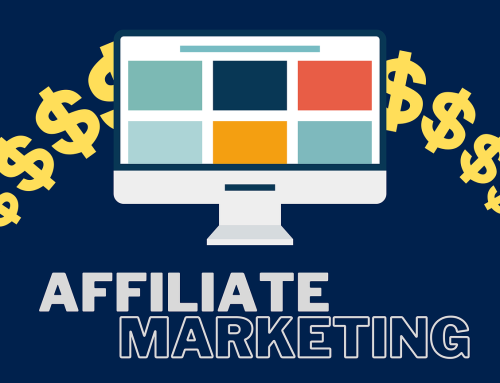Marketing plays a pivotal role in elevating brand recognition and cultivating a robust pipeline of potential customers that convert into sales. For small businesses, the endeavor to amplify their presence encounters hurdles like limited visibility and constrained resources, be it budgetary constraints or time limitations. Nevertheless, implementing targeted strategies can significantly enhance your marketing endeavors and propel business growth.
Whether grappling with budgetary limitations, time constraints due to a compact team, or a sense of being aimless, crafting a tailored marketing plan can serve as a compass, steering your business toward success. Embracing the following strategic approaches is paramount, as they lay the groundwork for fostering awareness and driving revenue, ensuring sustainable growth for your organization:
- Understanding Your Audience and Crafting a Unique Value Proposition
In the ever-evolving landscape of business, understanding your audience and articulating your unique value proposition stand as foundational pillars for any successful venture. This dual approach, intertwined with strategic execution, can significantly propel a small business into the limelight.
- Delve Deep into Audience Insights
The saying “the riches are in the niches” underscores the importance of specialization over broad appeal. Rather than casting a wide net, small businesses should focus on a specific niche where they can dominate and provide unmatched value. To achieve this, a comprehensive understanding of your audience is paramount.
Begin by analyzing your existing customer base. Who are they? What challenges do they face? What motivates their purchasing decisions? Creating detailed buyer personas can provide invaluable insights into the psyche of your ideal customer. Dive deep into their pains, problems, priorities, and aspirations. This knowledge enables you to tailor your messaging and offerings, ensuring they resonate powerfully with your target audience.
- Articulate Your Distinct Value Proposition
Once you’ve honed in on your target audience, the next step is differentiating yourself in the marketplace. In a sea of competitors, your value proposition serves as your unique selling point, distinguishing you from the crowd. Ask yourself: What sets your business apart? Is it unparalleled customer service, innovative solutions, or perhaps unmatched quality? Whatever it is, articulate it clearly and consistently across all touchpoints.
Emphasizing your value proposition isn’t merely about stating what you do but demonstrating how you do it better than anyone else. Craft compelling narratives that highlight your strengths, expertise, and unique offerings. This not only enhances your brand’s credibility but also instills confidence in potential customers, convincing them that you’re the right choice.
- Prioritize and Focus on Key Objectives
In the realm of marketing, the possibilities are endless, often leading to the temptation to pursue multiple avenues simultaneously. However, spreading yourself too thin can dilute your efforts and hinder progress. Instead, identify your primary objectives and concentrate your resources on achieving them. Whether it’s enhancing brand awareness, boosting sales, or expanding your customer base, zero in on areas that offer the most significant potential impact.
Maintaining a singular focus allows you to allocate resources efficiently, ensuring optimal results. As you make progress toward your primary goal, you can gradually expand your initiatives, leveraging data-driven insights to refine your strategies further.
- Leverage Short-Term Strategies for Immediate Impact
While long-term growth strategies are essential, small businesses must also capitalize on short-term opportunities to maintain momentum. Prioritize tactics that yield immediate results, such as targeted paid advertisements or promotional campaigns. By generating quick wins, you can reinvest profits into more sustainable growth initiatives, ensuring a balanced and scalable approach.
- Cultivate and Nurture Customer Relationships
In the pursuit of growth, existing customers often take a backseat, overshadowed by the allure of acquiring new ones. However, this overlooks a valuable asset, customer loyalty. Research indicates that retaining existing customers is more cost-effective than acquiring new ones, emphasizing the importance of nurturing these relationships.
Implement strategies to delight your customers, exceeding their expectations at every touchpoint. Whether it’s personalized communication, exclusive offers, or exceptional post-purchase support, make them feel valued and appreciated. By prioritizing customer retention, you not only boost profitability but also harness the power of word-of-mouth referrals, further expanding your reach.
- Harness Digital Tools and Platforms
In today’s digital age, establishing a robust online presence is non-negotiable. Create a professional website that serves as a 24/7 sales channel, showcasing your offerings and facilitating customer interactions. Incorporate content marketing strategies like blogging to drive organic traffic and position yourself as a thought leader in your industry. Additionally, explore alternative channels, such as social media platforms and influencer collaborations, to expand your reach and engage with potential customers effectively.
- Collaborate and Forge Strategic Partnerships
Collaborating with other businesses can amplify your reach and unlock new growth opportunities. Identify complementary businesses within your niche and explore partnership opportunities that benefit both parties. Whether it’s co-hosting events, cross-promoting products, or sharing resources, strategic collaborations can provide access to new audiences and foster innovation.
- Embrace Innovation and Adaptability
In a saturated market, innovation and adaptability emerge as critical success factors. Continuously evaluate market trends, consumer preferences, and emerging technologies to stay ahead of the curve. Experiment with new sales channels, social media platforms, and marketing strategies, monitoring performance metrics to identify areas for improvement. By embracing a culture of innovation and adaptability, you can navigate competitive landscapes effectively and position your business for long-term success.
How Robust Regulations and Standards Sustain Small Business In a Competitive Market
For small businesses, robust regulations and standards are vital to prioritize employee safety and underscore a company’s employee-centric ethos, enhancing retention rates. OSHA’s pivotal role cannot be overstated; its training mandates ensure adherence to safety guidelines, fostering a secure workplace environment. This commitment not only strengthens employee retention but also elevates the company’s reputation. Consequently, adhering to OSHA guidelines supports the company’s image, facilitating a competitive edge in the marketplace.
Follow OSHA’s Standards to Ensure Employee Safety
- Employee Safety and Retention Through OSHA Compliance
In the contemporary competitive job landscape, organizations are increasingly recognizing the paramount importance of employee retention. A significant catalyst for this retention is the organization’s commitment to the well-being and safety of its workforce, directly correlating with enhanced efficiency and effectiveness. The integration of comprehensive health and safety programs fosters a secure and conducive work environment, significantly diminishing the occurrence of workplace accidents and injuries.
The Occupational Safety and Health Administration (OSHA) stipulates various safety regulations tailored for diverse industries. These regulations encompass pragmatic safety controls aimed at addressing and mitigating workplace hazards effectively. Importantly, these safety controls are meticulously designed, factoring in aspects such as cost implications, technological feasibility, and operational constraints.
- OSHA Compliance: Company Policies for Employee Safety
Central to OSHA’s framework is the concept of the Hierarchy of Controls or the company policies that need to be followed for employee safety, a five-tiered approach to risk management delineated as a pyramid. At its pinnacle lies ‘Elimination,’ advocating the complete eradication of hazards, albeit recognizing its occasional impracticality. After elimination is ‘Substitution,’ which promotes the replacement of hazardous elements with safer alternatives.
Simultaneously, ‘Administrative Controls’ underscore procedural modifications, encompassing policy formulations, training regimens, and exposure-limiting work schedules. Although slightly less effective than prior measures, administrative controls significantly bolster overall workplace safety. Lastly, ‘Personal Protective Equipment (PPE)’ emerges as the final recourse, encompassing gear like helmets, gloves, and respirators. While indispensable in specific scenarios, PPE’s efficacy hinges on individual adherence and is often viewed as a supplementary safety layer.
Enhancing Employee Safety: OSHA Regulatory Strategies for Addressing Implementation Challenges
To effectively address challenges in implementing employee safety, regulatory compliance is paramount.
- First, conducting a comprehensive risk assessment is essential, serving as a foundational step to recognize potential hazards. Engage employees in this assessment to harness their firsthand insights.
- Prioritizing elimination and substitution is crucial; these initial levels of hazard control offer optimal safety benefits.
- Subsequently, investing in engineering controls, such as machine guards or enhanced ventilation, can directly counteract risks at their source. These physical modifications stand as dependable safeguards that don’t hinge solely on human adherence.
- Concurrently, robust administrative controls, encompassing clear policies, procedures, and tailored training programs, are indispensable. Regularly updating these administrative measures ensures they remain pertinent to evolving tasks and technologies.
- Finally, while personal protective equipment (PPE) acts as the ultimate safety layer, its significance should not be diminished. Ensuring employees have access to suitable PPE, coupled with regular training on its proper utilization and maintenance, solidifies a comprehensive safety strategy.
Wrapping Up
Effective marketing strategies form the backbone of business growth, particularly for small enterprises grappling with limited resources. The key to this is understanding your audience deeply and articulating a compelling value proposition. By prioritizing objectives and leveraging both short-term and long-term strategies, businesses can maintain momentum and achieve sustainable growth. Equally crucial is nurturing customer relationships, harnessing digital tools, and fostering strategic partnerships to expand the reach and drive innovation.
Furthermore, prioritizing employee safety through OSHA compliance not only ensures regulatory adherence but also fosters a culture of well-being, enhancing retention and productivity. Embracing a holistic approach that combines marketing acumen, customer-centricity, innovation, and regulatory compliance positions businesses for success in today’s competitive landscape.
By Elis Enano






